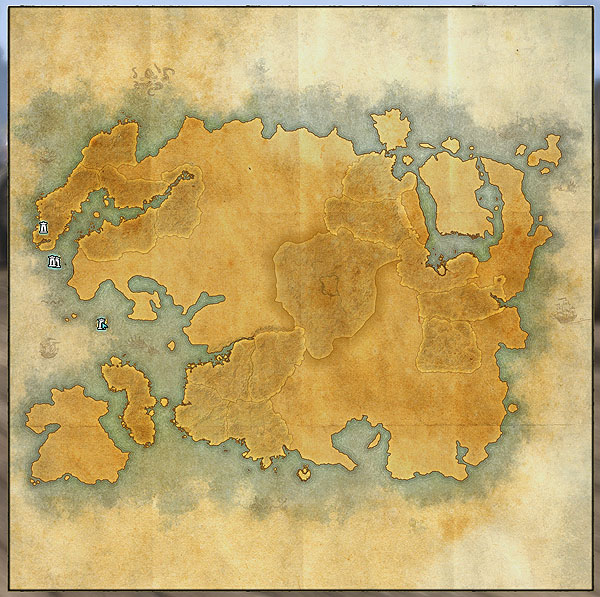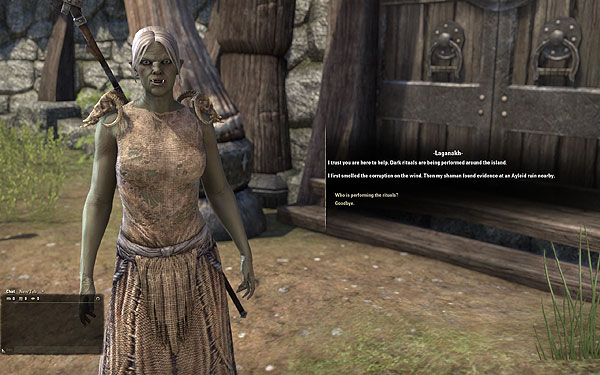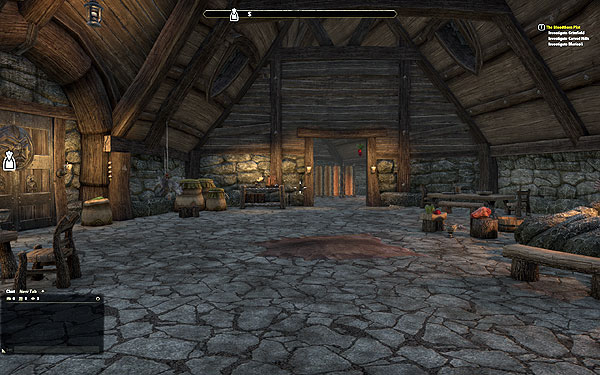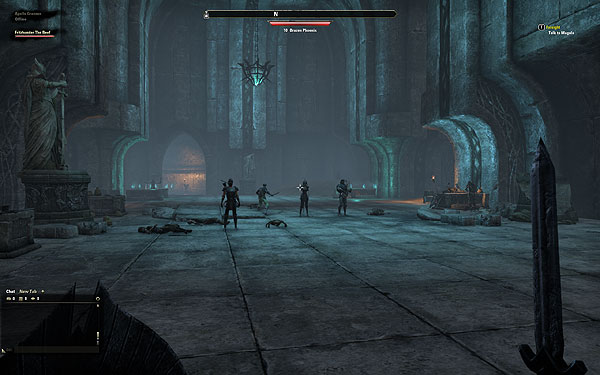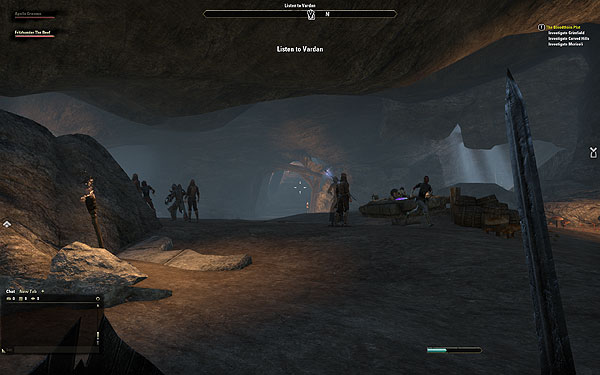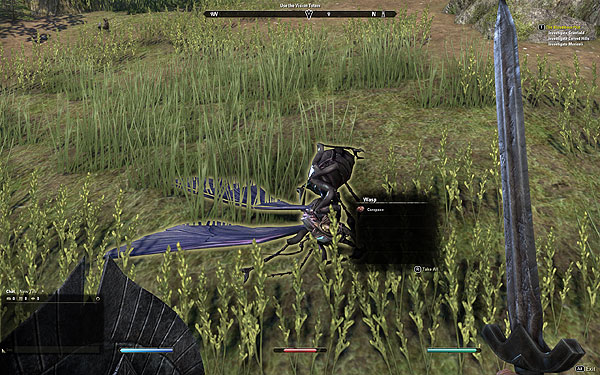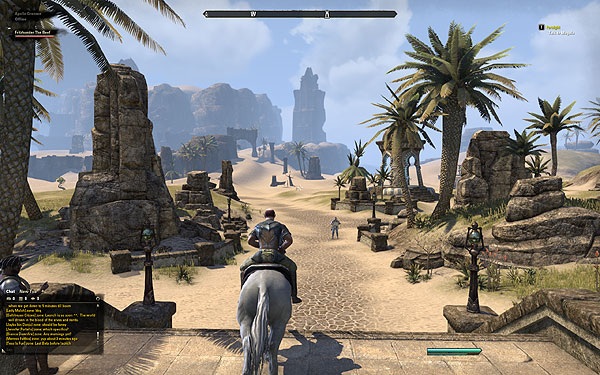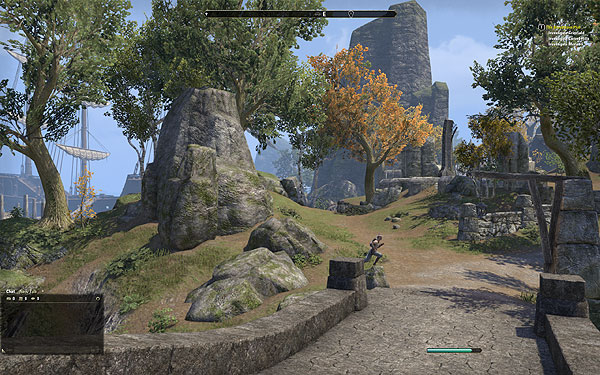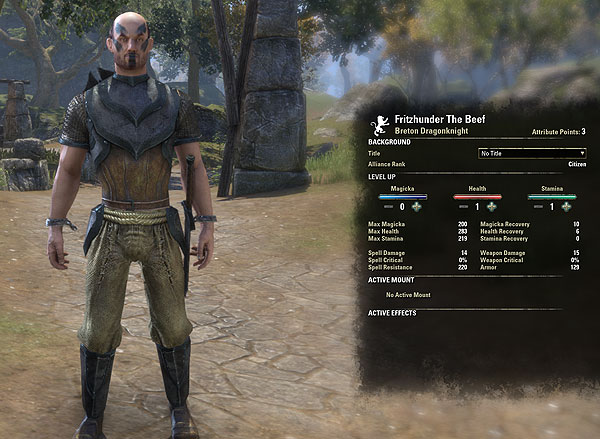How Well Does The Elder Scrolls Online Run On Your PC?
The Elder Scrolls Goes Online
The Elder Scrolls franchise defines what we've come to expect from an open-world, single-player RPG. The Elder Scrolls III: Morrowind was notable for its gigantic land mass and advanced 3D graphics, introducing pixel-shaded water and accelerated tessellation. In The Elder Scrolls IV: Oblivion, all communication was spoken, the storyline was refined, and the graphics were vastly improved. Of course, The Elder Scrolls V: Skyrim pleased us with the best-polished experience from the series.
Although The Elder Scrolls games historically targeted single-player gameplay, it was inevitable that the intellectual property would find its way into a multi-player title sooner or later. Previously, modders came up with their own workarounds to let friends join them in the world of Tamriel. But now the game's development team has a massively multiplayer version ready to go. Dubbed The Elder Scrolls Online, it goes live today, April 4. I was able to spend some time with the game back in March, though.
The Elder Scrolls Online takes place some 800 years before the events of Morrowind and Oblivion. It is a time of conflict, as three factions (the Ebonheart Pact, the Daggerfall Covenant, and the Aldmeri Dominion) compete to rule Tamriel. Of course, that gives players a good excuse to beat each other up in PvP battles.
Because this is an Elder Scrolls game, though, there's still an expectation of quality single-player progression. In my short time with it, the game appeared to tick all of the Elder Scrolls check-boxes. Quests were introduced in a way that fit the franchise, even if they were still rough around the edges. Actually, it felt a bit like Skyrim, if the developers were only given half as much time to ship. There was that lack of polish compared to the Elder Scrolls games I'm used to. But again, the finished product is only launching today.
My son described his impression of the game as Elder Scrolls Lite, and I don't particularly disagree. Some of this comes from the transition to a multi-player world, no doubt. Many areas are large and empty, presumably to accommodate throngs of online players. NPC homes look more like hotel lobbies than intimate living spaces. And that makes perfect sense in an MMO; there's just an aspect of The Elder Scrolls lost in translation.
Shared quest instances don't help. For example, I was tasked to perform a stealthy prison break. Once inside, though, I was one of 30 or so testers with the same quest, brutally swarming slowly-spawning enemies. It wasn't a covert mission; rather, we were part of a brute force uprising, breaking any momentum the narrative had. That's not to say I don't enjoy cooperating with strangers for a common goal. There were plenty of times I received unsolicited help, or had the opportunity to save another adventurer from certain death. The most jarring detractor, then, is also the game's most notable asset. It does feel like The Elder Scrolls, so the elements that don't fit my single-player expectation of the series are awkward.
The interface is familiar for the most part. You can sneak and see the classic sleepy-eye reticule. Character customization is incredibly robust for an MMO. Conversations transpire as you'd expect. Right-click to block; left-click to strike. Kill a giant wasp and loot a carapace from the corpse. Usually, when you try out a MMORPG, you start out cautiously as you get used to a new way of doing things. Not so with The Elder Scrolls Online, which is so familiar to so many gamers that you'll want to charge ahead. When something happens you're not used to, though, you may find yourself getting irritated, rather than allowing yourself to simply learn the game.
Get Tom's Hardware's best news and in-depth reviews, straight to your inbox.
Personally, my favorite part of the game is that sense of discovery, which comes from exploring the countryside. Wandering around Tamriel is all about braving an ancient keep occupied by wraiths, stumbling into a secret door leading to an underground cave, or finding hidden treasure in a grove. In most MMOs, the landscape is merely there to travel as you run from one instance to the next. However, The Elder Scrolls games are distinctive for their details in between adventures.
Speaking of exploration, the changing terrain reminds you that this is not Oblivion or Skyrim, games sporting a fairly consistent look throughout the land. I spent my time in the game looking at Middle Eastern-looking deserts, European-styled seaside cities, and sparse, craggy islands. The diversity is nice, encouraging me to explore even more.
Then again, Skyrim and Oblivion rubber-banded to your skill level. The Elder Scrolls Online does not. So, don't explore a land that's out of your league. I never appreciated Oblivion's behind-the-scenes scaling as much as I do now. It allowed me to experience every corner of Tamriel whenever I wanted to.
I didn't get to spend as much time in the beta as I wanted, but those were my impressions. The game was a little disjointed at first, but improved as I went along. Hopefully, additional polish was added prior to today's official launch.
Regardless, the main purpose of going hands-on with The Elder Scrolls Online was to measure performance on the PC. Ready to have a look at this title's graphics quality and settings?
Don Woligroski was a former senior hardware editor for Tom's Hardware. He has covered a wide range of PC hardware topics, including CPUs, GPUs, system building, and emerging technologies.
-
templarklimek I'm running it at 4K and in ultra it's very smooth with an I7 and titan black. Having said that I don't plan on staying a subscriber. They got my 80.00 bucks to start and that's it. I can't get over the subpar graphics although I realize it's an MMO and can't have the best graphics going for it. Nor does it have the attention to detail, depth, and immersive ness that I expect in an elder scrolls title. I've gone back to skyrim and all the mods. Skyrim at 4k is a work of art. The MMO seem faked with monsters just keep respawning out of thin air and no real meaning or placement in the world around you. Again I understand it's a MMO and not a detailed single player game. What worries me is how will this affect the Elder Scrolls single player? Are they gonna blow that off?.. ;(Reply -
SchizoFrog I played during the final open BETA test and that was enough for me to decide this wasn't for me... and I was gutted by that decision.Any populated area is complete chaos with people, horses and more just spawning out of nowhere all around you. The only way not to get annoyed and distracted is to blank out most of what is going on around you which is a complete contradiction from what is supposed to be an immersive MMO.More than that though is that I found the intro sparse and almost none existent, I felt lost and had no real idea of where I should go, what I should do whren I got there nor why I should do any of it.As for the graphics, it looked good but nothing to blow me away and certainly there was nothing that I felt was better than Skyrim on the same rig, even without Skyrim's mods running. I just want to also add what this article doesn't cover in that your personal PC hardware may well run the game very smoothly but as with any other online game, it's smoothness is more down to the internet connection of yourself and those you choose to game with. From my experience, a fibre connection is an absolute must for smooth gameplay.Reply -
jankeke How is the user interface on this ? Is it as bad as in Skyrim ?I am wondering if I should try this game but if the interface is "console-like", it would certainly speak against it.Reply -
Drejeck played this game in the beta invitational. it sucks bad just because it changes the gameplay to the boring, old fashion, 1 2 3 4 key skill/spell. i've quit wow because of that, even D3 and GW2 failed at that. The only games I liked nowadays for the combat system are Tera and Neverwinter. TES is nice because you play it like an FPS, and with the gamepad was really nice. just because of this I can judge it a total fail. I've played 3 hours before removing the game. is something changed meanwhile? i want it more action. like a Reckoning Online. no ones roleplays online anymore, the DAoC era is gone.Reply -
Zombie615 I watch some people play this live on twitch an being a fan ever since Morrowind I have to say I'm not that impressed or interested. There is a part of me that wants to give it a try but there is a bigger part of me saying don't fall for this money pit. $15 a month isn't really the issue speaking of money... it's just the fact that it cost something every month in general. I love the elder scrolls series but I've never been a fan of MMORPG. It takes too much dedication to feel accomplished in a game of this genre an with that said it takes away from the instant gratification I got playing the other games in this series.It should have just been a multiplayer release an not an actual MMORPG. Like just a single player storyline type of thing but with the option to let a group of friends join you. Kind of like Diablo 3 or Dead Island I guess you could say.The PVP idea IMO is trash. A duel arena against other people using your character from your current campaign would had sufficed. Though there is nothing I can say that will change anything so there you have it Zenimax.... You lost another faithful fan on this title. Hopefully you will announce a fallout 4 (offline) title soon or your next Single Player Elder Scrolls title. If not you can count me out forever.Reply
